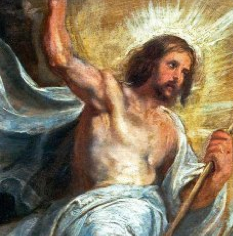 In a Daily Beast think-piece titled “Did Updike Sell the Resurrection Short?” writer Matthew Sitman considers Updike’s poem, “Seven Stanzas at Easter.”
In a Daily Beast think-piece titled “Did Updike Sell the Resurrection Short?” writer Matthew Sitman considers Updike’s poem, “Seven Stanzas at Easter.”
“The poem gains new life of its own every year around this time. It inevitably flits across social media as Holy Week draws to a close, a very quotable addition to the Facebook feeds of America’s more literary Christians. Updike’s words circulate in more traditional ways, too, giving pastors and priests just the rhetorical flourish they need for their Easter nominees. This Sunday, many churchgoers who’ve never read a page of Rabbit, Run will nod along at Updike’s verse.
“The force of ‘Seven Stanzas,’ however, goes beyond its seasonal affiliation. After all, there are other poems about Easter. Perhaps Updike’s resonates because it seems attuned to the nature of belief in the modern world—or rather, it asks the modern believer what she is willing to believe. The poem forces the reader to answer for herself what really happened in that backwater of the Roman Empire in the days after Jesus was executed as a criminal. There can be, to use Updike’s word, no ‘sidestepping’ this issue. Are you ’embarrassed’ by this ‘miracle’ or not?
“This is a perennial question, the place where all quests for the historical Jesus give way to faith—or not—and Updike is wrong not to remind us of its stakes. But for all his theological sophistication, and despite my admiration for his literary gifts, Updike’s poem leaves me unsatisfied. It achieves its existential urgency by skirting the complexity and strangeness of what the Gospels actually tell us about the resurrection. The poem is a blunt instrument, jarring and powerful, but it obscures as much as it reveals.
“Updike asks us to leave aside figurative language and interrogate the Gospel accounts of the resurrection for their literal truth, if it really happened or not. When we read these passages, however, they also should interrogate us, unsettling our judgments about what we think we know and how we understand what it meant for Jesus to rise from the dead. They defy all our inevitable attempts to escape the uncertainty of real faith and reduce the resurrection to a pat story that does little more than comfort those who encounter it.”
Sitman thinks it is a “sense of wonder at the sheer perplexity of what Jesus was like after his resurrection that seems to be missing from Updike’s ‘Seven Stanzas at Easter.’ The problem is not that Updike challenges us to consider the strange idea that a man rose from the dead; it’s that what he holds before us isn’t strange enough. Whatever is going on in the Gospels, it seems to resist the efforts of those who want to assimilate the Easter story either through a literalism uncomfortable with paradox or by turning it into a somewhat embarrassing myth meant to inspire hope.”
Read the full article.
See also: “A few minutes with Updike’s ‘Seven Stanzas at Easter,'” by Tom Grosh IV and a 2009 post recommended by Grosh, “On Easter and Updike” by David E. Anderson.
